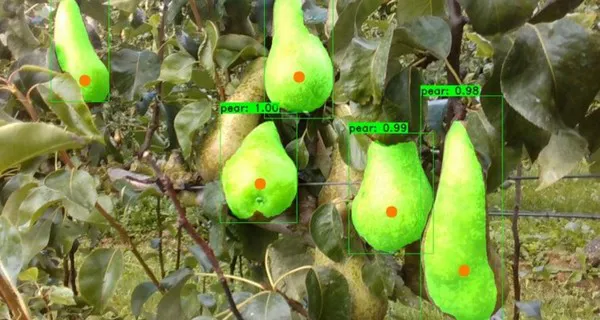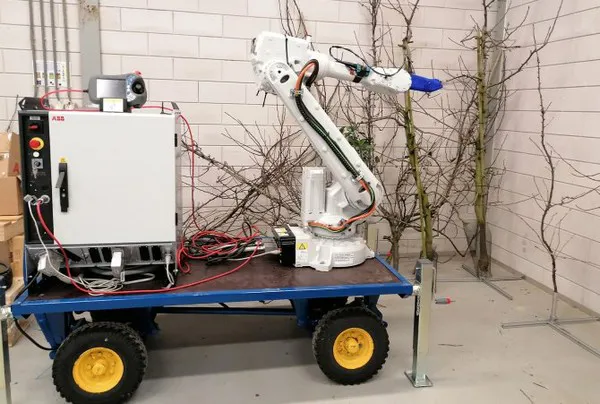In the future, fruit growers may have a single robot to help harvest, prune, and weed throughout the year. In the Netherlands, the Agro Food Robotics' Next Fruit 4.0 project is developing a gripping and pruning shear that uses image analysis to automatically select the correct fruits and branches.
Apple, pear, berry, and other fruit growers are sometimes literally short of hands. The problem is greatest during harvesting season, but labor is also scarce for other work. "There's a great need for automation," begins Jochen Hemming, a researcher at Agro Food Robotics. "Unfortunately, fruit harvesters aren't yet fully developed. Plus, they'll be pricey."

In the Next Fruit 4.0 project, Hemming and his colleagues are working with fruit-growing and robotics companies on developing a multifunctional robot. After all, harvesting only lasts a few weeks, while the same wagon with the same robotic arm could be put to work in the orchard more often.
"We think a robot should do more than just pick. It should do things like weeding, pruning, and thinning blossoms too. Growers would be far keener to purchase such a robot," explains Jochen.
Robot with different hands
This multifunctional robot will consist of an autonomous vehicle with a storage bin and a robot arm. The farmer could add different hands. It will also have a detection system that takes photos which the robot analyses using artificial intelligence.
During harvesting, it can drive around, locates ripe fruit, remove these from the tree, and place them in the bin. That sounds simple, but it's not. "The problem is nature's great variation. No apple or pear is the same, and a tree is an intricate 3-D structure. The robot must be able to deal with that."

Photo, WUR: Project Next Fruit 4.0's multifunctional robot.
Pear picking movement
Apple gripper development is far advanced worldwide; not so one for pears. The researchers are, thus, focusing on that. "Picking pears versus apples requires different movements. The pear's stalk must remain attached; otherwise, it rots faster. For the correct harvesting motion, not only the fruit's position, but orientation, too, is important," Jochen continues. He also wants to see whether a force sensor could help the gripper with this precision work.
Over the past year, the researchers have been gathering images from orchards and developing software that can locate pears in the trees. The gripper will be tested outdoors for the first time during this fall's harvest.
Pruning shears know where to cut
Hemming not only collaborates with pear growers but redcurrant growers too. They have the greatest need for a robot that automatically prunes berry bushes in winter. So the researchers are first building a berry bush clipper and then one for apple and pear trees with their far more complex branch structures.
"The big challenge with pruning is that the robot has to recognize annual and biennial wood. Their color and flower buds differ slightly. We're investigating whether a camera system can recognize that and if you could use a set of parameters to determine which branches the robot should prune." The first trials will start soon.
Added functions
The Next Fruit 4.0 project runs from 2020 to 2024. Jochen hopes the pear gripper and berry, apple, and pear pruner will be able to work efficiently by then. Meanwhile, researchers and companies are exploring the possibilities of even more hands for the robot.
"You could use such a robot for precision localized disease control spraying. The more functions you can combine, the better. It only becomes truly economically viable if you can do more than just harvesting and pruning," he concludes.
Source: WUR
